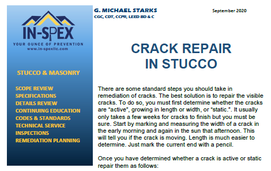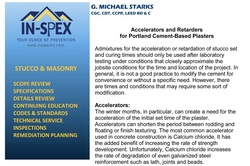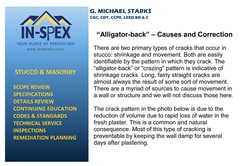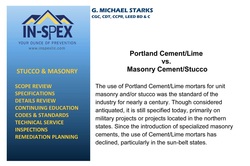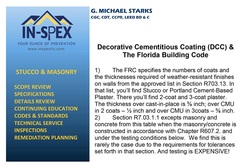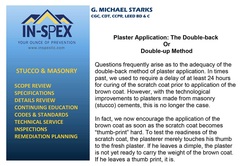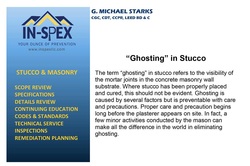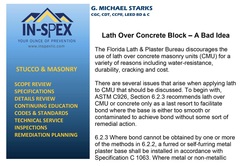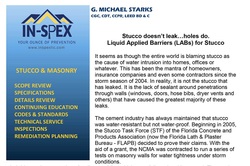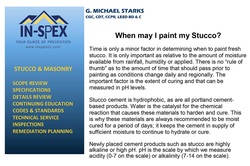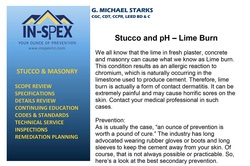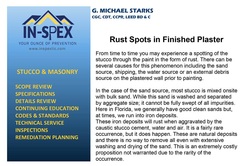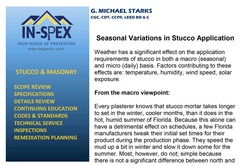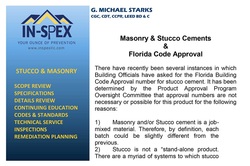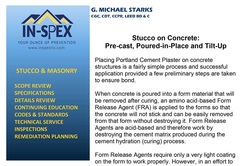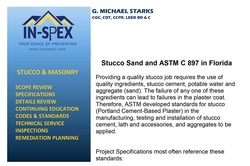Document Library
|
Choosing a Consulting Expert for Stucco Inspection or Review
It seems that there has lately been a tremendous increase in the number of claims of defective design, workmanship or supervision regarding “stucco” on projects throughout Florida. As a result, there are now a myriad of so called “experts” offering their opinions on design and installation techniques. Read more
|
|
“Alligator-back” – Causes and Correction
There are two primary types of cracks that occur in stucco: shrinkage and movement. Both are easily identifiable by the pattern in which they crack. The “alligator-back” or “crazing” pattern is indicative of shrinkage cracks. Read more
|
|
|
Plaster Application: The Double-back
|
|
Lath Over Concrete Block – A Bad Idea
The Florida Lath & Plaster Bureau discourages the use of lath over concrete masonry units (CMU) for a variety of reasons including water-resistance, durability, cracking and cost.
There are several issues that arise when applying lath to CMU that should be discussed. Read More |
|
When may I paint my Stucco?
Time is only a minor factor in determining when to paint fresh stucco. It is only important as relative to the amount of moisture available from rainfall, humidity or applied. There is no “rule of thumb” as to the amount of time that should pass prior to painting as conditions change daily... Read More
|
|
Rust Spots in Finished Plaster
From time to time you may experience a spotting of the stucco through the paint in the form of rust. There can be several causes for this phenomenon including the sand source, shipping, the water source or an external debris source on the plastered wall prior to painting. Read More
|
|
Masonry & Stucco Cements &
|
Stucco Sand and ASTM
|
|

